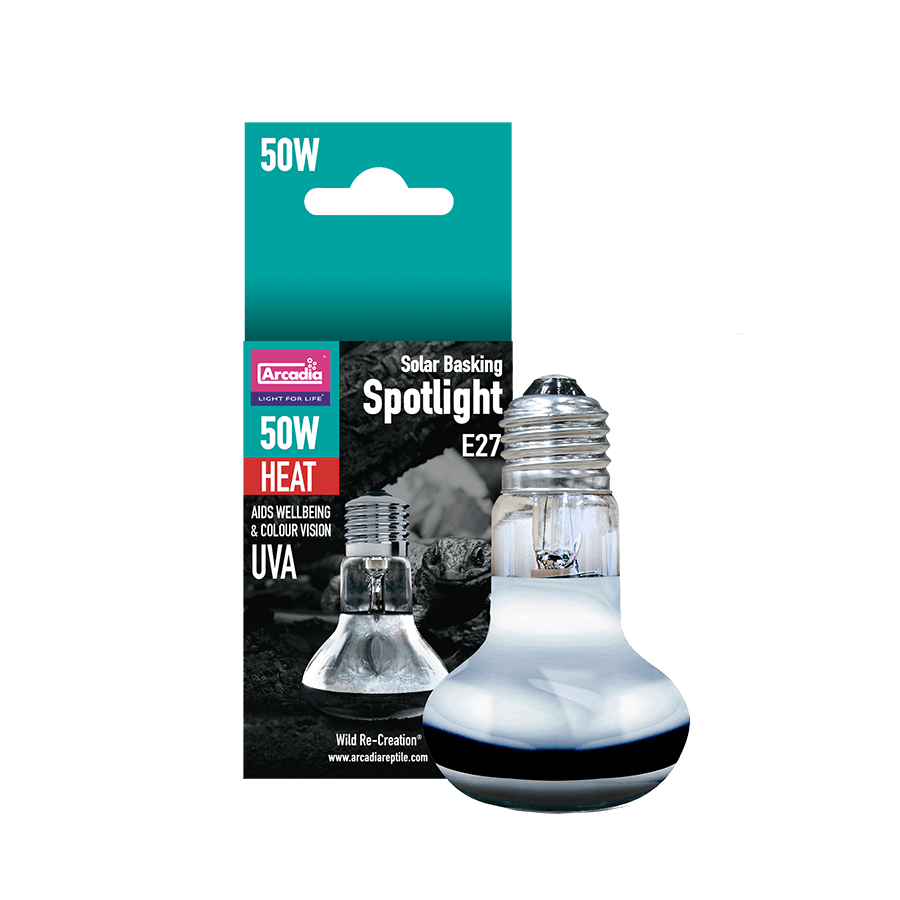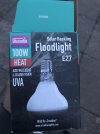Hi guys my tortoise is not opening his eyes and also are swollen we have had him for about 3 months but he was fine about 3ish weeks ago. When i bought it they suggested straw pellets only now i have seen apparently its too dry and humid. i have now changed to orchid bark that was only today i have been soaking him for about 20 mins in warm water everyday but it seems he is not opening his eyes also i did use viscotears eye gel but that hasnt done anything. Also his eyes are closed ALL THE TIME and he cannot see when he is eating im unsure what to do now. I got him vitamin A komodro pellets to help his eyes but he hasnt eaten them yet.. Is there anything i could do?
You are using an out of date browser. It may not display this or other websites correctly.
You should upgrade or use an alternative browser.
You should upgrade or use an alternative browser.
Tortoise swollen eyes and not opening eyes what shall i do hermanns tortoise
- Thread starter siaana
- Start date
Please show us your lights...that might be it
What bulbs are you using? What type of UV bulb? Is it a cfl?Hi guys my tortoise is not opening his eyes and also are swollen we have had him for about 3 months but he was fine about 3ish weeks ago. When i bought it they suggested straw pellets only now i have seen apparently its too dry and humid. i have now changed to orchid bark that was only today i have been soaking him for about 20 mins in warm water everyday but it seems he is not opening his eyes also i did use viscotears eye gel but that hasnt done anything. Also his eyes are closed ALL THE TIME and he cannot see when he is eating im unsure what to do now. I got him vitamin A komodro pellets to help his eyes but he hasnt eaten them yet.. Is there anything i could do?
hi i sent the bulbs are they okayWhat bulbs are you using? What type of UV bulb? Is it a cfl?
TaylorTortoise
Well-Known Member
Keep us updated. Lets see what the experts say
ArmadilloPup
Well-Known Member
You don't need the basking bulb, they are harsh on shells and on eyes. You can replace the basking bulb with a CHE for heat.
The T5 doesn't need to light up the whole enclosure, be sure there are still areas where the tortoise can hang out above ground and out of the light if they choose.
The T5 doesn't need to light up the whole enclosure, be sure there are still areas where the tortoise can hang out above ground and out of the light if they choose.
can you give me a link of which bulb and light to buyYou don't need the basking bulb, they are harsh on shells and on eyes. You can replace the basking bulb with a CHE for heat.
The T5 doesn't need to light up the whole enclosure, be sure there are still areas where the tortoise can hang out above ground and out of the light if they choose.
TeamZissou
Well-Known Member
The bulbs you have are fine. The UVB tube needs to be mounted about 24" above the substrate, and only needs to be on for about 1-2 hours, midday. The flood bulb you have is fine, and it just needs to be hung at a height to achieve a basking spot of about 95 F. Use a thermometer to dial in the height.
Excessive vitamin A can actually CAUSE eye issues, so I would avoid any supplements/powers/products that contain extra vitamin A for a few months. Tortoises get enough vitamin A in their diet since they eat a lot of greens. Added vitamin A from supplements causes an overload that usually results in excessive skin peeling and sometimes swelling in the eyes.
What other supplements or powders were you feeding before this problem started? Do you see any skin peeling? Post some photos of the tortoise.
Excessive vitamin A can actually CAUSE eye issues, so I would avoid any supplements/powers/products that contain extra vitamin A for a few months. Tortoises get enough vitamin A in their diet since they eat a lot of greens. Added vitamin A from supplements causes an overload that usually results in excessive skin peeling and sometimes swelling in the eyes.
What other supplements or powders were you feeding before this problem started? Do you see any skin peeling? Post some photos of the tortoise.
I would not replace the bulb with a che. Most tortoises go to the light for basking as the light is their fake sun. They don't bask under a dark che. Some might finally figure it out, otherwise a light has to be hung next to the che.can you give me a link of which bulb and light to buy
I would not replace the basking bulb with the same bulb though. Stay away from the uva bulbs as like already said, too much uva can cause eye problems.
TeamZissou
Well-Known Member
I would not replace the bulb with a che. Most tortoises go to the light for basking as the light is their fake sun. They don't bask under a dark che. Some might finally figure it out, otherwise a light has to be hung next to the che.
I would not replace the basking bulb with the same bulb though. Stay away from the uva bulbs as like already said, too much uva can cause eye problems.
The bulb pictured is a regular incandescent bulb, and is the most appropriate bulb for basking. Lower wattage may be needed to dial in the basking spot temp if the enclosure is not high enough. For The reference to UVA on the packaging is just a marketing thing. I compared the spectrum of this Arcadia basking bulb to a regular incandescent bulb here, and they are the same:
Tortoise Senpai Input Requested
So not the one I'm currently using: http://www.exo-terra.com/en/products/reptile_dome.php. The narrow one. Something like this: https://www.cyberzoo.se/sv/articles/2.300.6791/zoo-med-deluxe-porcelain-brooder-lamp-25-cm-max-200w? And the Arcadia is correct? I edited my post so don't know if you...
Too much UVA does not cause eye problems; CFLs sometimes put out UVC which damages the eyes. Too much UVA can contribute to pyramiding, which is the reason to avoid it.
A lot of places I have read, does say both too much uvb and uva can damage eyes.The bulb pictured is a regular incandescent bulb, and is the most appropriate bulb for basking. Lower wattage may be needed to dial in the basking spot temp if the enclosure is not high enough. For The reference to UVA on the packaging is just a marketing thing. I compared the spectrum of this Arcadia basking bulb to a regular incandescent bulb here, and they are the same:
Tortoise Senpai Input Requested
So not the one I'm currently using: http://www.exo-terra.com/en/products/reptile_dome.php. The narrow one. Something like this: https://www.cyberzoo.se/sv/articles/2.300.6791/zoo-med-deluxe-porcelain-brooder-lamp-25-cm-max-200w? And the Arcadia is correct? I edited my post so don't know if you...tortoiseforum.org
Too much UVA does not cause eye problems; CFLs sometimes put out UVC which damages the eyes. Too much UVA can contribute to pyramiding, which is the reason to avoid it.
Also, the arcadia bulb pictured is a spot bulb. A regular incandescent, at least in my mind, is a regular house lamp bulb.
So, to be clear, you compared the spot bulb uva with a regular house lamp incandescent bulb uva and they are the same?
TeamZissou
Well-Known Member
Arcadia seems to sell both 'spotlights' and 'floodlights. The OP posted the flood version, so I assume that it produces a light in a dispersed area similar to the hardware store flood bulbs that are often recommended.

In terms of the spectrum, the one pictured on the Arcadia website is nearly identical to the spectrum of a regular incandescent bulb, when comparing relative power output. A regular house lamp incandescent bulb and a flood incandescent bulb will produce the same spectrum since the light is generated using the same method. You'll notice also on the plots how little power output there is in the UVA range (315-400 nm) so this lamp is not producing much UVA. I would expect there to be a large spike in that range if it were truly a UVA-specific bulb. The language of "includes UVA" seems like marketing to me.
It's my understanding that common eye issues in tortoises (photokeratitis) are usually caused by CFL bulbs that output UVC rays (100-280 nm), which are very damaging to tissue. Last year when N95 masks were in short supply, some hospitals were using UVC lighting to sterilize them. Presence of UVA on the other hand is said to add more color contrast to the vision of tortoises. However, MarkW has talked about how UVA and UVB can contribute to pyramiding via drying out the new keratin at the scute boundaries, so there is reason to avoid regular fluorescent bulbs which output light in the UVA range. I suppose it's possible that too powerful of a UVB bulb could be mounted too close to the tortoise (say at an extremely high UVI of 15+) and that could cause eye issue. Some defective bulbs have also been measured outputting UVI of 50+, so that could be a cause as well.
That said, I think this is possibly a vitamin A overdose issue.

Solar Basking Lamps - Arcadia Reptile
Solar Basking Lamps Solar Basking Spotlight Provides a tight focused beam that will allow for intense heat provision Includes UVA to aid well-being and colour vision Increases ambient temperatures and has a focused beam for intense basking Warm colour output Use with a thermostat and alongside a...
www.arcadiareptile.com
In terms of the spectrum, the one pictured on the Arcadia website is nearly identical to the spectrum of a regular incandescent bulb, when comparing relative power output. A regular house lamp incandescent bulb and a flood incandescent bulb will produce the same spectrum since the light is generated using the same method. You'll notice also on the plots how little power output there is in the UVA range (315-400 nm) so this lamp is not producing much UVA. I would expect there to be a large spike in that range if it were truly a UVA-specific bulb. The language of "includes UVA" seems like marketing to me.
It's my understanding that common eye issues in tortoises (photokeratitis) are usually caused by CFL bulbs that output UVC rays (100-280 nm), which are very damaging to tissue. Last year when N95 masks were in short supply, some hospitals were using UVC lighting to sterilize them. Presence of UVA on the other hand is said to add more color contrast to the vision of tortoises. However, MarkW has talked about how UVA and UVB can contribute to pyramiding via drying out the new keratin at the scute boundaries, so there is reason to avoid regular fluorescent bulbs which output light in the UVA range. I suppose it's possible that too powerful of a UVB bulb could be mounted too close to the tortoise (say at an extremely high UVI of 15+) and that could cause eye issue. Some defective bulbs have also been measured outputting UVI of 50+, so that could be a cause as well.
That said, I think this is possibly a vitamin A overdose issue.
GUYS OMG HIS EYES ARE BETTER WE HAVE JUST BEEN SOAKING HIM AND HIS EYES ARE FINE!!!!Arcadia seems to sell both 'spotlights' and 'floodlights. The OP posted the flood version, so I assume that it produces a light in a dispersed area similar to the hardware store flood bulbs that are often recommended.

Solar Basking Lamps - Arcadia Reptile
Solar Basking Lamps Solar Basking Spotlight Provides a tight focused beam that will allow for intense heat provision Includes UVA to aid well-being and colour vision Increases ambient temperatures and has a focused beam for intense basking Warm colour output Use with a thermostat and alongside a...www.arcadiareptile.com
In terms of the spectrum, the one pictured on the Arcadia website is nearly identical to the spectrum of a regular incandescent bulb, when comparing relative power output. A regular house lamp incandescent bulb and a flood incandescent bulb will produce the same spectrum since the light is generated using the same method. You'll notice also on the plots how little power output there is in the UVA range (315-400 nm) so this lamp is not producing much UVA. I would expect there to be a large spike in that range if it were truly a UVA-specific bulb. The language of "includes UVA" seems like marketing to me.
It's my understanding that common eye issues in tortoises (photokeratitis) are usually caused by CFL bulbs that output UVC rays (100-280 nm), which are very damaging to tissue. Last year when N95 masks were in short supply, some hospitals were using UVC lighting to sterilize them. Presence of UVA on the other hand is said to add more color contrast to the vision of tortoises. However, MarkW has talked about how UVA and UVB can contribute to pyramiding via drying out the new keratin at the scute boundaries, so there is reason to avoid regular fluorescent bulbs which output light in the UVA range. I suppose it's possible that too powerful of a UVB bulb could be mounted too close to the tortoise (say at an extremely high UVI of 15+) and that could cause eye issue. Some defective bulbs have also been measured outputting UVI of 50+, so that could be a cause as well.
That said, I think this is possibly a vitamin A overdose issue.
Similar threads
- Replies
- 13
- Views
- 888

